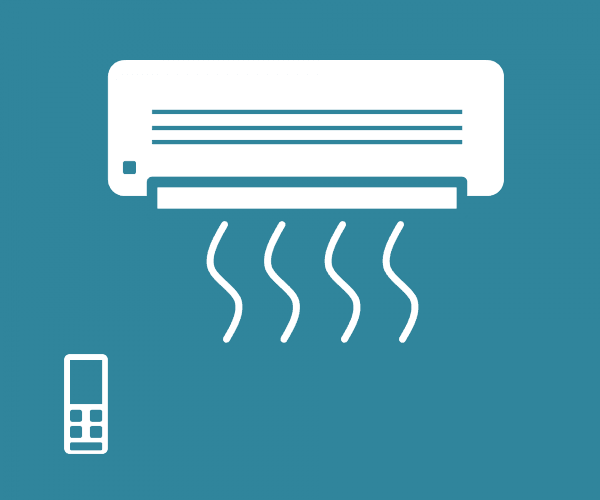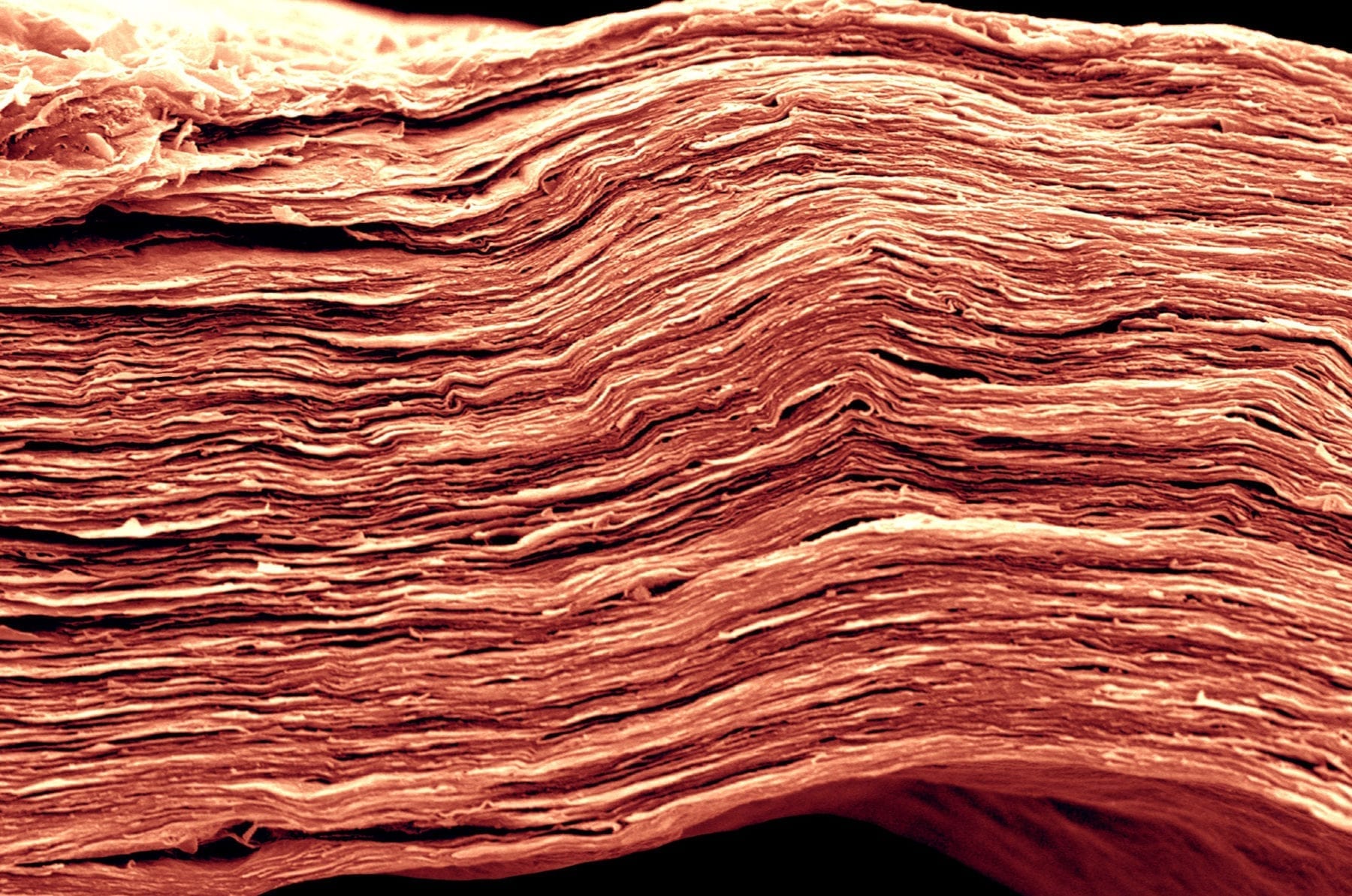
The effectiveness of non-mechanical, low-energy methods for moderating temperature and humidity has been evaluated in a series of experiments by researchers from the University of Cambridge.
Natural ventilation is a low-energy way to keep buildings at a comfortable temperature, but in order to increase its use, we need simple, accurate models that can respond quickly to changing conditions
Megan Davies Wykes
The researchers found that a temperature difference between inside and outside has a remarkably small effect on how well a room is ventilated when ventilation is primarily driven by wind. In contrast, wind can increase ventilation rates by as much as 40% above that which is driven by a temperature difference between a room and the outdoors. The exact rate of ventilation will depend on the geometry of the room.
The results, reported in the journal Building and Environment, could be used to help designers and urban planners incorporate natural ventilation principles into their designs so that buildings can be kept at a comfortable temperature while using less energy
Heating and cooling account for a significant proportion of energy use in buildings: in the US, this is as high as 50 per cent. In addition, as global temperatures continue to rise, demand for air conditioning – which emits greenhouse gases – rises as well, creating a damaging feedback loop.
Natural ventilation, which controls indoor temperature without using any mechanical systems, is an alternative to traditional heating and cooling methods, which reduces energy use and greenhouse gas emissions.
“Natural ventilation is a low-energy way to keep buildings at a comfortable temperature, but in order to increase its use, we need simple, accurate models that can respond quickly to changing conditions,” said lead author Dr Megan Davies Wykes from Cambridge’s Department of Engineering.
There are two main types of natural cross-ventilation: wind-driven and buoyancy-driven. Cross-ventilation occurs in rooms that have windows on opposite sides of a room. Wind blowing on a building can result in a high pressure on the windward side and a low pressure at the leeward side, which drives flow across a room, bringing fresh air in from outside and ventilating a room. Ventilation can also be driven by temperature differences between the inside and outside of a room, as incoming air is heated by people or equipment, resulting in a buoyancy-driven flow at a window.
“We’ve all gotten used to having a well-controlled, narrow temperature range in our homes and offices,” said Davies Wykes. “Controlling natural ventilation methods is much more challenging than switching on the heat or the air conditioning, as you need to account for all the variables in a room, like the number of people, the number of computers or other heat-generating equipment, or the strength of the wind.”
In the current study, the researchers used a miniature model room placed inside a flume to recreate the movements of air inside a room when windows are opened in different temperature and wind conditions.
Using the results from lab-based experiments, Davies Wykes and her colleagues built mathematical models to predict how temperature difference between inside and outside affects how well a room is ventilated.
The researchers found that the rate of ventilation depends less on temperature and more on wind. Anyone who has tried to cool down on a hot night by opening the window will no doubt be familiar with how ineffective this is when there is no wind.
This is because in many rooms, windows are positioned halfway up the wall, and when they are opened, the warm air near the ceiling can’t easily escape. Without the ‘mixing’ effect provided by the wind, the warm air will stay at the ceiling, unless there is another way for it to escape at the top of the room.
“It was surprising that although temperature differences do not have a strong effect on the flow of air through a window, even small temperature differences can matter when trying to ventilate a room,” said Davies Wykes. “If there are no openings near the ceiling of a room, warm indoor air can become trapped near the ceiling and wind is not effective at removing the trapped air.”
The next steps will be to incorporate the results into building design, making it easier to create well ventilated, low energy buildings.
The study was part of the MAGIC (Managing Air for Green Inner Cities) project, which is developing computer models for natural ventilation, so that designers can incorporate natural ventilation into city design, reducing demand for energy. The MAGIC project is funded by the Engineering and Physical Sciences Research Council (EPSRC).
Learn more: Wind more effective than cold air at cooling rooms naturally
The Latest on: Natural ventilation
- 10 Surprising Health Risks of Keeping Windows Closedon May 17, 2024 at 1:55 pm
It is best to open the windows for ventilation between 9 a.m. and 6 p.m. when air movement is active. A winding path is created if you open windows facing each other, and ventilation is better. In ...
- Deep-sea sponge's 'zero-energy' flow control could inspire new energy efficient designson May 17, 2024 at 8:43 am
The Venus flower basket sponge, with its delicate glass-like lattice outer skeleton, has long intrigued researchers seeking to explain how this fragile-seeming creature's body can withstand the harsh ...
- Improving healthcare facilities: The importance of indoor environmental qualityon May 17, 2024 at 7:24 am
Poor IEQ can lead to respiratory and cardiovascular diseases and increase cancer risks. It is vital for patients and healthcare professionals to have access to clean, fresh air in hospitals and ...
- Attic Ventilation 101: What Homeowners Need to Knowon May 15, 2024 at 3:34 pm
Taking advantage of this natural process, referred to as passive ventilation, is the most common way to vent an attic. In order to facilitate this exchange of warm and cool air, the general rule ...
- How ventilation can improve poultry healthon May 8, 2024 at 5:00 pm
Poultry houses should be constructed to take advantage of the prevailing winds to improve the efficiency of natural ventilation. [File, Standard] Ventilation can be described as the circulation of ...
- Ventilation strategieson May 6, 2024 at 3:14 pm
Interest in ventilation strategies accelerated during the global pandemic with countries around the globe taking different regulatory approaches to improve the health of the built environment.
- How architects designed this gorgeous Oslo building to never pay for heat, AC, or ventilationon May 1, 2024 at 1:00 am
The shape of Snohetta's new "triple-zero" office building helps air flow naturally. Snohetta's new 'triple-zero' office building doesn't buy energy for heating, cooling, or ventilation.
- Types of Smoke Ventilation Systemson December 7, 2023 at 12:16 pm
Natural ventilation systems utilise strategically placed windows, vents, and smoke shafts (where required) to disperse and vent smoke and fumes, provide a supply of fresh air and aid smoke clearance.
- Buoyancy Effects on Natural Ventilationon October 13, 2023 at 2:44 pm
The book presents new principles in natural ventilation design and addresses surprising, little-known natural ventilation phenomena that are seldom taught in architecture or engineering schools.
- Natural Ventilation for the Prevention of Airborne Contagionon March 14, 2022 at 11:36 pm
Therefore, to improve external validity, values of 12 ACH and corresponding calculated values for absolute ventilation were substituted for all comparisons between mechanical and natural ventilation.
via Bing News
The Latest on: Low-energy cooling
- Orient BLDC fans: Stay cool and comfortable with these top 6 energy efficient pickson May 17, 2024 at 9:30 pm
And if power reduction is your motive, BLDC fans can be your best bet. While, there are plenty of companies offering BLDC fans, Orient BLDC fans are a standout amongst others.Orient BLDC fans ...
- Sustainable Indoor Environment For The Comfort And Well-Being Of Buildings’ Userson May 17, 2024 at 6:45 am
Buildings often account for the largest part of a country’s energy usage which is still mainly based on fossil fuels. There is a great emphasis on reducing the reliance of buildings on fossil fuel ...
- More EV chargers, bicycle lots and super-low energy buildings at upcoming Punggol Digital Districton May 16, 2024 at 4:04 am
The upcoming business park in Punggol will have the largest number of electric vehicle chargers in a single estate.
- Best 5 star Carrier ACs: Top 6 options to stay cool while saving money on electricity billson May 15, 2024 at 3:14 am
Discover the top energy-efficient 5-star Carrier ACs for a cool, cost-effective summer. Find the perfect balance of cooling power and savings.
- Mastering Quantum Chaos: Innovative Cooling Method Stabilizes Quantum Experimentson May 11, 2024 at 4:13 pm
More stable quantum experiments are made possible at TU Wien with new tricks – by ingeniously splitting Bose-Einstein condensates Quantum experiments, whether they focus on quantum computers, quantum ...
- The 7 best portable air conditioners of 2024on May 9, 2024 at 2:48 pm
I consulted with two experts and tested 14 units for cooling ability, energy efficiency, and ease of use to find the best portable air conditioner. My top pick is the LG Dual Inverter Smart Wi-Fi ...
- Cool Drinks And Food On The Road: Powerful Compressor Revolutionises Cooling In RV Kitchenson May 8, 2024 at 6:56 pm
With a compressor, the cooling capacity is higher, keeping the temperature in the refrigerator at stable, low levels. Thanks to additional batteries and/or photovoltaic panels, the cooling system with ...
- Low energy availability surrogates correlate with health and performance consequences of Relative Energy Deficiency in Sporton May 1, 2024 at 10:14 am
Low energy availability (EA) is suspected to be the underlying cause of both the Female Athlete Triad and the more recently defined syndrome, Relative Energy Deficiency in Sport (RED-S). The ...
- 'Very low energy': Onlookers say Trump's courthouse rant made him 'sound 150 years old'on April 25, 2024 at 3:29 pm
Sarah Burris is a long-time veteran of political campaigns, having worked as a fundraiser and media director across the United States. She transitioned into reporting while working for Rock the ...
- Brighter, low-energy OLEDs are going into production this year – but they won’t be coming to TVs just yeton April 22, 2024 at 4:59 pm
The best OLED TVs are about to get a whole lot better. A new panel technology known as eLEAP will officially go into production later this year, according to FlatpanelsHD. Although it won't be ...
via Bing News











